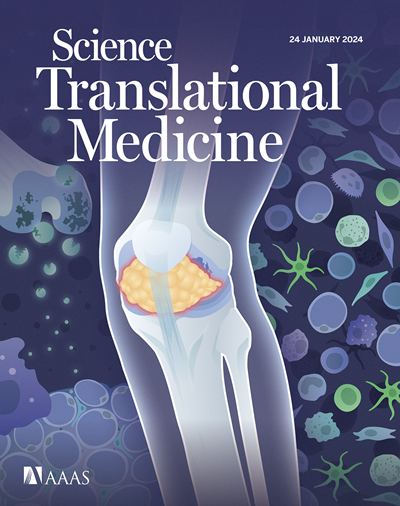Targeting HBV with RNA interference: Paths to cure
IF 14.6
1区 医学
Q1 CELL BIOLOGY
引用次数: 0
Abstract
Chronic hepatitis B virus (HBV) infection affects millions worldwide despite the availability of effective vaccines. The stability of HBV’s genomic minichromosome (cccDNA) within hepatocytes, the persistence of integrated viral sequences capable of producing viral antigens, and the ability of the virus to evade immune control all contribute to the difficulty in achieving a functional cure. Existing antiviral treatments have minimal impact on HBV transcription, allowing persistent viral antigen production and immune dysfunction. Emerging RNA interference (RNAi) therapies targeting HBV RNAs reduce viral replication, antigen expression, and, in turn, cccDNA activity, providing a potential path to a functional cure.
RNA干扰靶向HBV:治愈途径
尽管有有效的疫苗,但慢性乙型肝炎病毒(HBV)感染影响着全世界数百万人。HBV基因组小染色体(cccDNA)在肝细胞内的稳定性,能够产生病毒抗原的整合病毒序列的持久性,以及病毒逃避免疫控制的能力,都是实现功能性治愈的困难因素。现有的抗病毒治疗对HBV转录的影响很小,允许持续的病毒抗原产生和免疫功能障碍。新兴的针对HBV RNA的RNA干扰(RNAi)疗法可减少病毒复制、抗原表达,进而降低cccDNA活性,为功能性治愈提供了一条潜在途径。
本文章由计算机程序翻译,如有差异,请以英文原文为准。
求助全文
约1分钟内获得全文
求助全文
来源期刊

Science Translational Medicine
CELL BIOLOGY-MEDICINE, RESEARCH & EXPERIMENTAL
CiteScore
26.70
自引率
1.20%
发文量
309
审稿时长
1.7 months
期刊介绍:
Science Translational Medicine is an online journal that focuses on publishing research at the intersection of science, engineering, and medicine. The goal of the journal is to promote human health by providing a platform for researchers from various disciplines to communicate their latest advancements in biomedical, translational, and clinical research.
The journal aims to address the slow translation of scientific knowledge into effective treatments and health measures. It publishes articles that fill the knowledge gaps between preclinical research and medical applications, with a focus on accelerating the translation of knowledge into new ways of preventing, diagnosing, and treating human diseases.
The scope of Science Translational Medicine includes various areas such as cardiovascular disease, immunology/vaccines, metabolism/diabetes/obesity, neuroscience/neurology/psychiatry, cancer, infectious diseases, policy, behavior, bioengineering, chemical genomics/drug discovery, imaging, applied physical sciences, medical nanotechnology, drug delivery, biomarkers, gene therapy/regenerative medicine, toxicology and pharmacokinetics, data mining, cell culture, animal and human studies, medical informatics, and other interdisciplinary approaches to medicine.
The target audience of the journal includes researchers and management in academia, government, and the biotechnology and pharmaceutical industries. It is also relevant to physician scientists, regulators, policy makers, investors, business developers, and funding agencies.
 求助内容:
求助内容: 应助结果提醒方式:
应助结果提醒方式:


